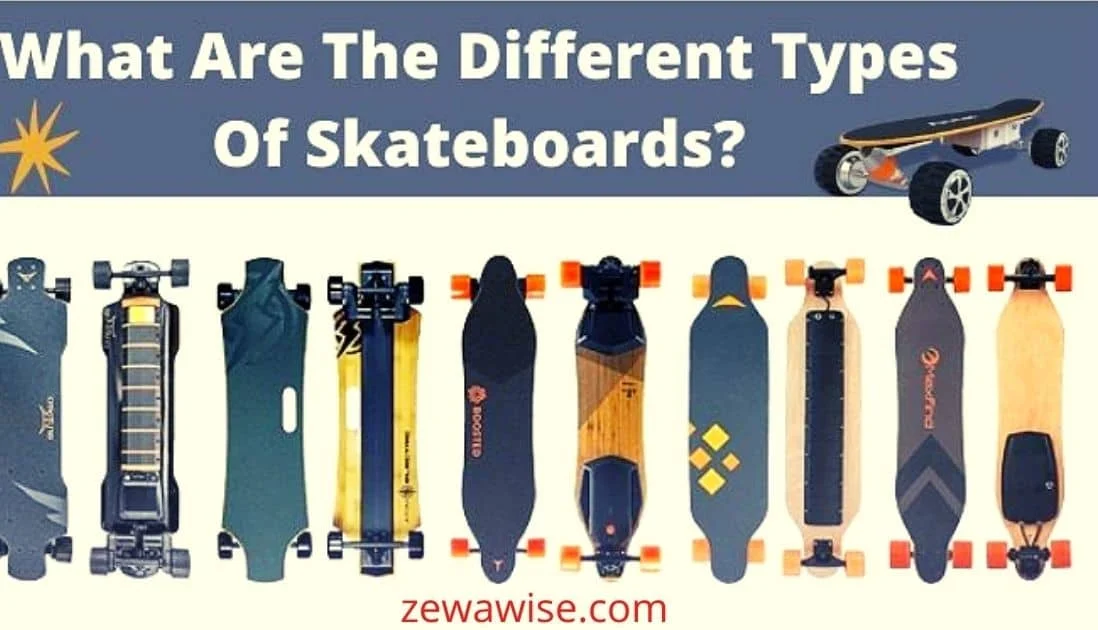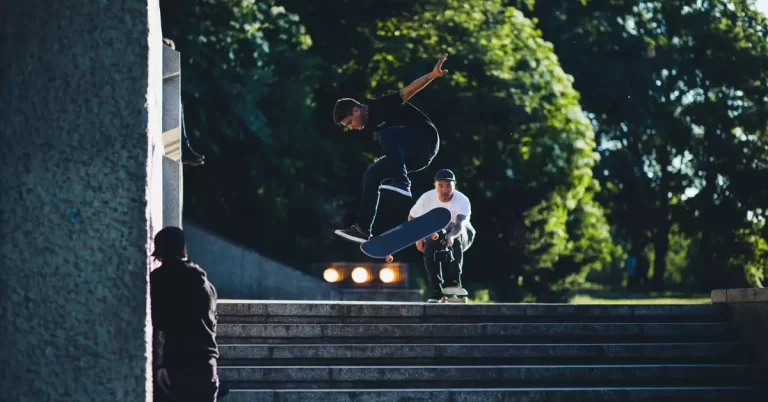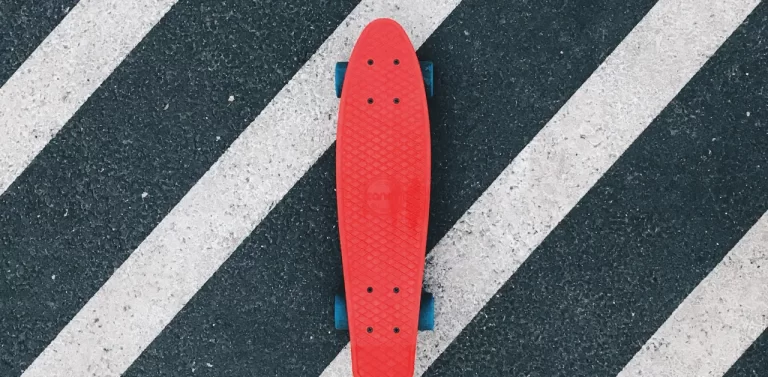Types of Skateboards: How to Choose the Best for You
Are you trying to figure out which type of skateboard fits your needs, or just want to understand the differences between a classic skateboard, a longboard, a cruiser, and more? Whether you’re curious about your first skateboard, want to upgrade for speed or tricks, or are exploring skateboarding as a way to cruise around town, this guide has you covered.
We’ll break down the main skateboard types, compare features, answer common questions, and help you choose the right board—using real-world advice and easy-to-follow tables.
What Is a Skateboard and How Does It Work?
A skateboard is a simple yet versatile vehicle used for both transport and sport. It usually consists of:
- A deck (the flat board you stand on), typically made from maple or bamboo
- Two trucks (metal axles mounted underneath)
- Four wheels made of polyurethane
- Bearings inside the wheels for smooth rotation
- Grip tape on top for traction
When you push off with your foot, you generate momentum. You steer by shifting your weight, which turns the trucks. Whether you’re performing tricks, cruising to school, or carving sidewalks, each type of skateboard is built to suit different riding styles.
Key Terms:
- Deck: The main board; comes in various shapes and lengths
- Truck: Metal axle that connects the wheels to the deck
- Wheel: Impacts speed, grip, and comfort
- Kick tail: The upward curve at the end of the board for tricks
- Wheelbase: The distance between the trucks, which affects stability
What Are the Main Types of Skateboards?
Skateboards come in many shapes and sizes. Here’s a quick overview:
| Type of Board | Typical Length (inches) | Main Use | Key Features |
|---|---|---|---|
| Standard/Street Skateboard | 28–33 | Tricks, skatepark, street skating | Double kick, popsicle shape |
| Longboard | 33–59 | Cruising, downhill, commuting | Large deck, softer wheels |
| Cruiser | 28–34 | City travel, campus, short trips | Wide, soft wheels, compact |
| Old School | 28–32 | Bowls, ramps, retro style | Wide deck, single kicktail |
| Mini Cruiser/Penny Board | 22–27 | Kids, portable skating | Small, plastic/fiberglass |
| Electric Skateboard | 30–40 | Commuting, long distances | Motor, battery, remote |
Related Styles:
- Freestyle skateboard: Focuses on flatground tricks and creative moves
- Downhill longboard: Built for speed and stability on hills
- Carve skateboard: Designed for smooth turns, like surfing on land
How Does Each Skateboard Type Differ?
What Is a Standard (Street) Skateboard?
A standard skateboard (or street skateboard) is the most common. It’s designed for tricks, ollies, and flips in parks or on the street.
- Deck: 7.5–8.5 inches wide, 28–33 inches long
- Shape: Popsicle (rounded nose and tail), double kick
- Wheels: Small (50–54mm), hard (95–101A durometer)
- Best for: Street skateboarding, skatepark sessions, learning tricks
Pros:
- Perfect for beginners
- Easy to carry
- Versatile for different skatepark features
What Is a Longboard?
A longboard skateboard is built for cruising, long-distance riding, and high speeds. Longboards feature a larger, more stable deck and are lower to the ground for comfort and control.
- Deck: 33–59 inches, often made of maple or bamboo
- Shape: Pintail, drop-through, fishtail, twin tip, and more
- Wheels: Large (60–75mm), soft (78–87A durometer)
- Best for: Downhill, commuting, carving, slalom
Pros:
- Stable at high speeds
- Smoother ride over rough surfaces
- Popular among commuters and surfers
What Is a Cruiser Board?
Cruiser boards blend aspects of shortboards and longboards. They’re portable, easy to maneuver, and ideal for city travel.
- Deck: 28–34 inches, mini cruiser skateboards even shorter
- Shape: Compact, sometimes with a kick tail
- Wheels: Softer and bigger than street boards (55–65mm)
- Best for: Cruising around town, campus, quick commutes
Pros:
- Comfortable for beginners
- Soft wheels absorb cracks and bumps
- Lightweight, fits in a backpack

What Is an Old School Skateboard?
Inspired by the original 1970s-80s designs, old school skateboards have wide, flat decks, pointed noses, and single kick tails.
- Deck: Wide, flat, up to 10 inches
- Shape: Fishtail, single kicktail
- Wheels: Medium to large, softer than street boards
- Best for: Ramp skating, pools, retro style
Pros:
- Unique vintage feel
- Stable for bowls and ramps
- Eye-catching graphics
What Is a Mini Cruiser or Penny Board?
A mini cruiser skateboard or penny board is compact and portable, great for younger riders and quick commutes.
- Deck: 22–27 inches, often made from plastic or fiberglass
- Shape: Rounded or mini longboard style
- Wheels: Soft, medium-sized
- Best for: Kids, short rides, carrying in a bag
Pros:
- Lightweight and affordable
- Easy to store
- Great for children or beginners
What Is an Electric Skateboard?
An electric skateboard adds a motor and battery, making it a top choice for those who want to reach high speeds with less effort.
- Deck: 30–40 inches, similar to longboards
- Shape: Varies
- Wheels: Large and soft
- Speed: Up to 25+ mph; acceleration via remote control
- Best for: Commuting, longer distances, adults
Pros:
- Effortless riding
- Fast and efficient transport
- Ideal for city commutes
Note: Some cities restrict electric skateboard use on public roads—always check local regulations.
Which Skateboard Is Best for Beginners?
What Should First-Time Riders Look For?
- Standard skateboards: Great for tricks and learning basic skills
- Cruiser boards: Ideal for easy, stable rides around town
- Mini cruisers: Best for young children (age 5–12)
Choose a board with softer wheels and a deck at least 7.5 inches wide for easy balancing. Beginners should avoid ultra-cheap toy skateboards, as they’re often harder to ride and break easily.
Are Longboards Good for New Skaters?
Longboards are popular with new riders who want stability and comfort rather than tricks. A classic longboard skateboard makes cruising or downhill riding smooth and confidence-boosting.
Tip:
For children and smaller riders, stick to boards under 32 inches.
What Should You Know About Skateboard Materials?
Why Does Deck Material Matter?
- Maple: The most common and durable; provides the right balance of flex and strength.
- Bamboo: Lightweight and eco-friendly; absorbs shock well.
- Plastic: Used for penny boards; lightweight, flexible, and affordable.
- Fiberglass: Sometimes added to decks for extra strength and flexibility.
Fun Fact:
A standard skateboard deck is usually made from 7–9 layers of Canadian maple for long-lasting pop.
What About Trucks and Wheels?
- Trucks: Usually aluminum alloy, sometimes with hollow kingpins for less weight.
- Wheels: Softer wheels (78–87A) are better for cruising, while harder wheels (95–101A) work best for tricks and skate parks.
How to Pick the Right Skateboard for Your Style?
What Are Your Skating Goals?
- Want to master tricks? Choose a standard street skateboard or double kick skateboard.
- Prefer cruising or transport? Go for a longboard or cruiser.
- Interested in high speeds or downhill? Pick a downhill longboard.
- Need something portable? Mini cruisers and penny boards are lightweight and easy to carry.
How Does Body Size and Shoe Size Affect Board Choice?
- Adults/teens: Wider decks (8+ inches) for stability.
- Children: Narrower boards (7–7.5 inches) for easier handling.
- Big feet: Wider decks prevent toe drag.
How Does Budget Impact Your Choice?
High-quality skateboards last longer and provide a better, safer ride. Name brands cost more, but offer real value. Avoid generic, low-cost “toy” boards.
What Are the Key Skateboard Parts and Why Do They Matter?
| Part | Function | What to Look For |
|---|---|---|
| Deck | Stands on; affects balance, tricks | Maple, bamboo, or composite materials |
| Trucks | Steering and turning | Solid build, responsive bushings |
| Wheels | Rolling, grip, speed | Softer for cruising, harder for tricks |
| Bearings | Wheel rotation, speed | ABEC 5 or higher for smooth ride |
| Grip Tape | Traction and safety | Full coverage, quality adhesive |
Why Are Wheel Size and Hardness Important?
- Bigger and softer wheels roll over cracks and rough pavement, perfect for cruising.
- Smaller, harder wheels are best for skate parks and flip tricks.
How to Stay Safe While Skateboarding?
What Safety Gear Should You Wear?
- Helmet (certified for skateboarding)
- Wrist guards
- Knee and elbow pads
- Closed-toe shoes
Where Should You Skate?
- Start in safe, flat areas away from heavy traffic.
- Use a skatepark for ramps, bowls, and rails.
- Join a skate club or local group for learning and support.
What Are Common Beginner Mistakes to Avoid?
- Not wearing safety gear
- Skipping warmups and balance practice
- Attempting advanced tricks too soon
- Using a poorly built or worn-out board
Conclusion
There’s a skateboard for every rider, from classic skateboards for tricks and parks to longboards for high speeds, and cruisers for city travel. The right board depends on your style, needs, and budget. Choose wisely, invest in quality, and always put safety first. With the right gear, skating can become one of the most enjoyable and healthy ways to travel and express yourself.
FAQs
1. What’s the best skateboard for learning tricks?
A standard street skateboard with a double kicktail and medium-width deck is perfect for tricks like the ollie and kickflip.
2. Is a longboard or cruiser better for getting around town?
For comfortable city travel, a cruiser board or classic longboard skateboard is ideal. They absorb bumps and handle uneven streets well.
3. How do I maintain my skateboard?
Check hardware regularly, clean your bearings, replace worn-out grip tape and wheels, and store your board in a dry place.
4. Can kids use electric skateboards safely?
Children should avoid high-powered electric skateboards. Always supervise younger riders, use safety gear, and follow the manufacturer’s age guidelines.
5. What’s the difference between a mini cruiser and a penny board?
Mini cruisers can be made of wood or plastic and offer more stability, while penny boards are ultra-compact plastic boards designed for portability.

“Welcome to our website, Here You’ll find a wealth of information on finding the right skating gear that will last for years to come, as well as tips and tricks to help you improve your skills. Whether you’re a beginner or an experienced skater, you’ll find something of value here.”





